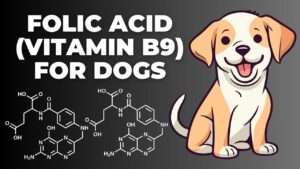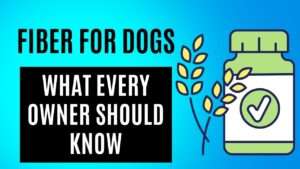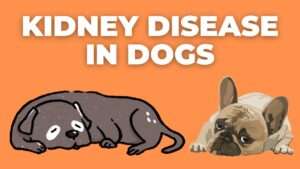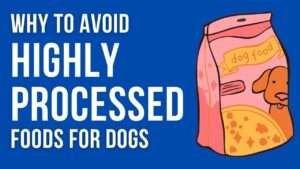Imagine strolling along a beach with your furry friend, the sun gently warming your skin, and the sound of waves crashing against the shore. As you sift through the sand, you stumble upon a cluster of clams. Your dog’s curiosity piques, and you wonder: can dogs eat clams?
In this comprehensive guide, we delve into the world of canine nutrition to uncover whether clams are a safe and healthy treat for your four-legged companion. From nutritional benefits to potential risks, let’s explore all you need to know about dogs and clams.
Contents Overview
What is Clams
Clams are shellfish found in oceans, rivers, and lakes worldwide. They have two hinged shells that open and close, protecting their soft body inside. Clams filter feed, drawing in water and extracting nutrients, making them an essential part of aquatic ecosystems. They come in various sizes and species, with some commonly consumed by humans as seafood delicacies. Clams are prized for their tender meat and are often cooked in various dishes, including soups, pastas, and chowders.
Nutritional Value of Clams
Clams are nutrient powerhouses, packed with protein, vitamins, and minerals. They provide a rich source of lean protein essential for muscle growth and repair. Additionally, clams contain vital vitamins such as B12, supporting nerve function, and vitamin C, boosting immune health. They also boast minerals like iron, zinc, and selenium, important for various bodily functions. Incorporating clams into your diet can contribute to overall health and well-being, offering a diverse array of essential nutrients in each serving.
Can Dogs Eat clams Safely?
Yes, dogs can eat clams safely, but it’s important to proceed with caution. Clams offer nutritional benefits such as lean protein, vitamins, and minerals, which can support your dog’s overall health. However, some dogs may be allergic to shellfish like clams, leading to potential adverse reactions. Additionally, the sharp shells of clams pose a choking hazard or risk of injury to your dog’s mouth or digestive tract if ingested. To minimize risks, consult with your veterinarian before introducing clams into your dog’s diet, start with small amounts to monitor their reaction, and ensure the clams are properly sourced and prepared. With careful consideration, clams can be a safe and occasional treat for your canine companion.
Potential Benefits of clams to Dogs
Incorporating clams into your dog’s diet, in moderation and properly prepared, can offer several potential benefits:
- Improved Skin and Coat Health: The omega-3 fatty acids found in clams can help alleviate dry, itchy skin and promote a shiny, lustrous coat in dogs.
- Enhanced Joint Health: The anti-inflammatory properties of omega-3 fatty acids may help reduce joint pain and stiffness, making clams particularly beneficial for dogs with arthritis or mobility issues.
- Boosted Immune System: The combination of vitamins and minerals in clams, including vitamin B12, iron, and zinc, can strengthen your dog’s immune system, helping them fight off infections and diseases.
- Increased Energy Levels: The protein content in clams provides a sustainable source of energy for active dogs, supporting their daily activities and exercise routines.
- Dental Health: The act of chewing on clam shells can help naturally clean your dog’s teeth, reducing plaque and tartar buildup and promoting better oral hygiene.
Potential Risks and Precautions of Feeding Clams to Dogs
While clams can offer various benefits to dogs, it’s essential to be aware of potential risks and take necessary precautions when incorporating them into your pet’s diet. In this section, we’ll explore the possible dangers associated with feeding clams to dogs and discuss important precautions to ensure your furry friend’s safety and well-being.
Potential Risks:
- Allergic Reactions:
- Some dogs may be allergic to shellfish, including clams. Allergic reactions can manifest as itching, swelling, gastrointestinal upset, or even more severe symptoms like difficulty breathing.
- If your dog has never consumed shellfish before, it’s crucial to introduce clams gradually and monitor for any signs of allergic reaction.
- Bacterial Contamination:
- Raw clams can harbor harmful bacteria such as Salmonella or Vibrio, which can cause food poisoning in dogs.
- Cooking clams thoroughly is essential to eliminate the risk of bacterial contamination and ensure the safety of your dog.
- Digestive Issues:
- Introducing new foods, including clams, into your dog’s diet too quickly or in large quantities can lead to digestive upset, including diarrhea, vomiting, or constipation.
- It’s essential to introduce clams gradually and in moderation to allow your dog’s digestive system to adjust.
- Choking Hazard:
- Clam shells pose a choking hazard to dogs, especially if they are not properly prepared or if your dog tries to swallow them whole.
- Always remove the shells from clams before serving them to your dog to prevent choking or gastrointestinal blockages.
Precautions:
- Consult Your Veterinarian:
- Before introducing clams or any new food into your dog’s diet, consult with your veterinarian, especially if your dog has underlying health conditions or food allergies.
- Your vet can provide personalized recommendations based on your dog’s specific dietary needs and health status.
- Cook Thoroughly:
- Always cook clams thoroughly before feeding them to your dog to eliminate the risk of bacterial contamination.
- Boiling or steaming clams until fully cooked ensures that they are safe for your dog to consume.
- Serve in Moderation:
- Clams should only be offered to dogs as an occasional treat or supplement to their regular diet.
- Moderation is key to preventing digestive issues and ensuring that clams do not become a significant portion of your dog’s calorie intake.
- Monitor for Adverse Reactions:
- Keep a close eye on your dog’s response after introducing clams into their diet.
- If you notice any signs of allergic reaction, gastrointestinal upset, or other adverse effects, discontinue feeding clams immediately and consult your veterinarian.
Safe Ways to Feed Clams to Dogs
- Cooking Methods:
- Boiling: Boiling clams until fully cooked is one of the safest ways to prepare them for your dog. This method eliminates the risk of bacterial contamination while preserving the nutritional benefits of the clams.
- Steaming: Steaming clams is another safe cooking method that retains their flavor and nutrients while ensuring they are thoroughly cooked.
- Shell Removal:
- Before serving clams to your dog, always remove the shells to prevent choking or gastrointestinal blockages. You can easily separate the clam meat from the shells after cooking.
- Portion Control:
- Feed clams to your dog in moderation, as part of a balanced diet. Avoid overfeeding, as excessive consumption can lead to digestive upset or other health issues.
- For small dogs, start with a small portion of cooked clam meat and monitor their response before offering more.
- Mixing with Dog Food:
- Mix cooked clam meat with your dog’s regular food to add variety and flavor to their meals. This can encourage picky eaters to consume their food and make mealtime more enjoyable for your dog.
- Ensure that the clam meat is thoroughly cooled before mixing it with your dog’s food to prevent burns or discomfort.
- Observation and Monitoring:
- Keep a close eye on your dog while they are eating clams for the first time. Monitor their behavior and watch for any signs of allergic reaction or digestive upset.
- If your dog shows any adverse reactions, such as itching, swelling, vomiting, or diarrhea, discontinue feeding clams immediately and consult your veterinarian.
- Incorporating into Treats:
- Use cooked clam meat as a nutritious ingredient in homemade dog treats. You can mix it with other dog-friendly ingredients like sweet potatoes, carrots, or oats to create delicious and healthy snacks for your furry friend.
- Ensure that the treats are appropriately sized for your dog’s breed and size to prevent choking hazards.
- Variety and Rotation:
- Rotate clams with other protein sources in your dog’s diet to provide a balanced nutritional profile and prevent food boredom.
- Offer clams as an occasional treat rather than a daily staple to maintain dietary diversity and prevent overconsumption.
When to Avoid Clams to Dog
- Allergic Reactions: If your dog has a known shellfish allergy, avoid feeding them clams to prevent allergic reactions such as itching, swelling, or difficulty breathing.
- Digestive Issues: If your dog has a sensitive stomach or has experienced digestive upset with new foods in the past, it’s best to avoid feeding them clams to prevent gastrointestinal issues.
- Shellfish Sensitivity: Dogs with a history of sensitivity to shellfish may not tolerate clams well, so it’s advisable to skip them in your dog’s diet to prevent potential adverse reactions.
- Underlying Health Conditions: If your dog has certain health conditions such as kidney disease or pancreatitis, it’s important to consult with your veterinarian before introducing clams into their diet, as they may exacerbate these conditions.
- Medication Interactions: Some medications that your dog may be taking could interact negatively with components found in clams, so it’s essential to check with your vet before feeding them to your furry friend.
Safe and Suitable Alternatives of Clams for Dogs
If you’re looking for safe and suitable alternatives to clams for your dog, consider options like cooked fish (such as salmon or mackerel), lean poultry (like chicken or turkey), or cooked eggs. These protein sources provide essential nutrients without the potential risks associated with shellfish. Additionally, vegetables such as sweet potatoes, carrots, and green beans can be excellent additions to your dog’s diet, offering vitamins, minerals, and fiber. Always consult with your veterinarian to ensure that any new foods you introduce to your dog’s diet are appropriate for their individual needs and dietary requirements.
Bottom Line
In conclusion, while clams can offer nutritional benefits for dogs, it’s essential to approach feeding them with caution and mindfulness of potential risks. Consultation with your veterinarian, starting small, and ensuring the clams are properly sourced and prepared are crucial steps in safely incorporating this seafood into your dog’s diet. With careful consideration, clams can be a tasty and nutritious occasional treat for your beloved canine companion, adding variety and health benefits to their meals.




































+ There are no comments
Add yours